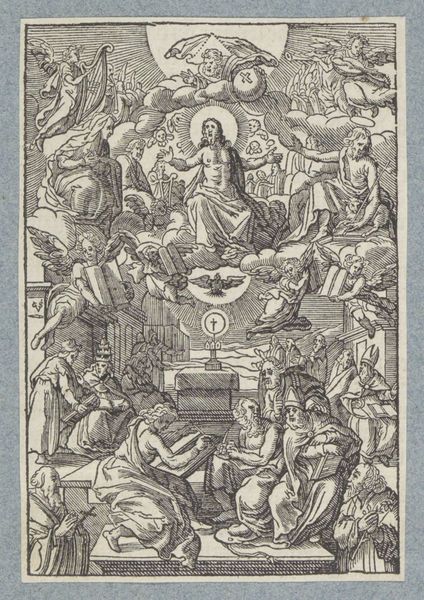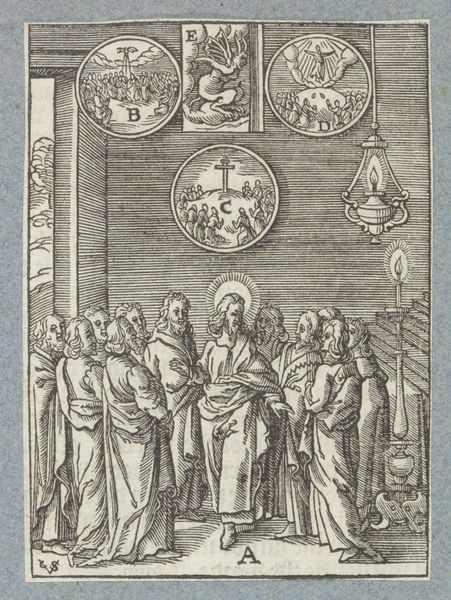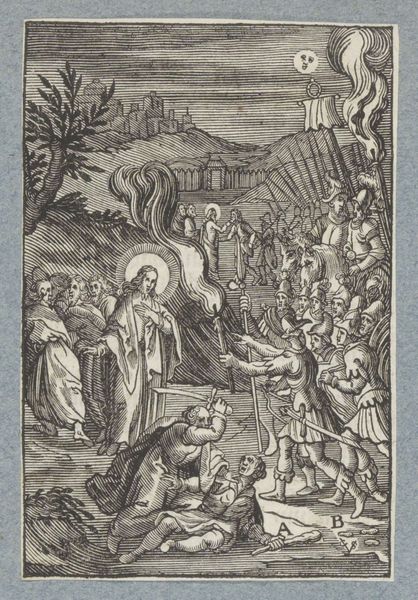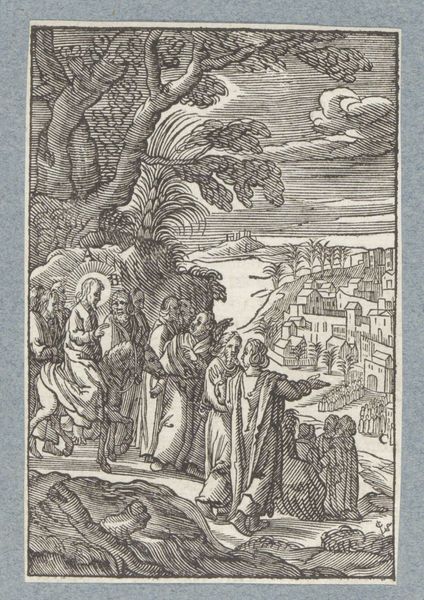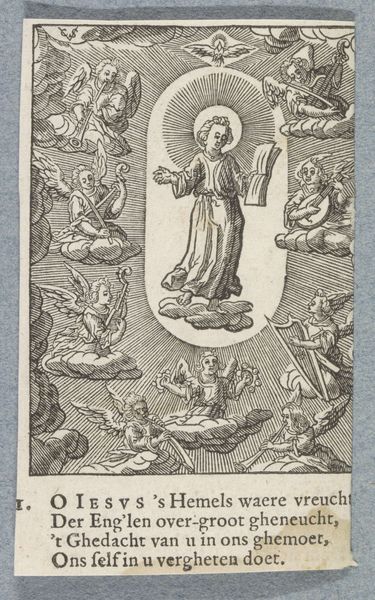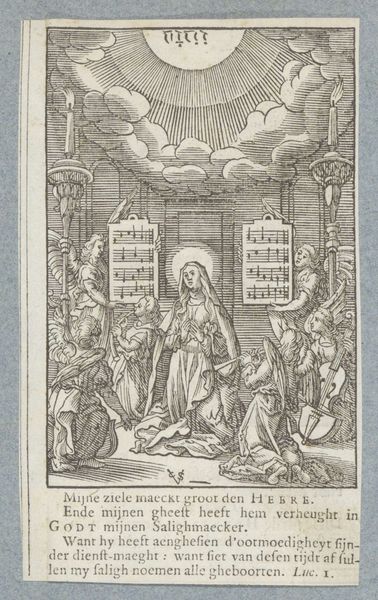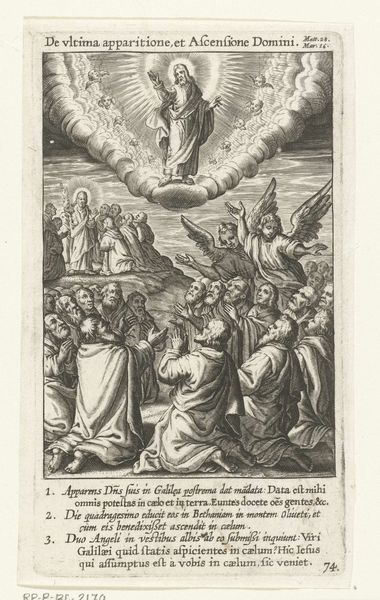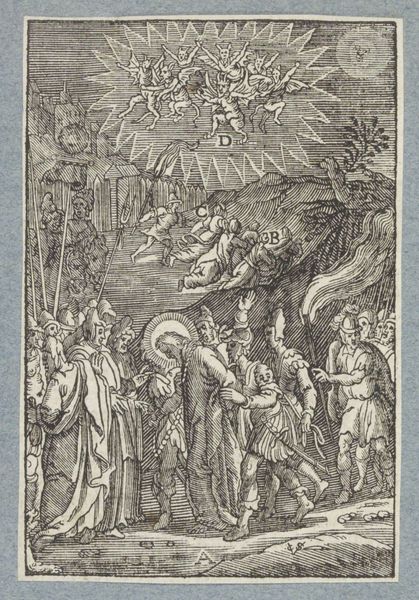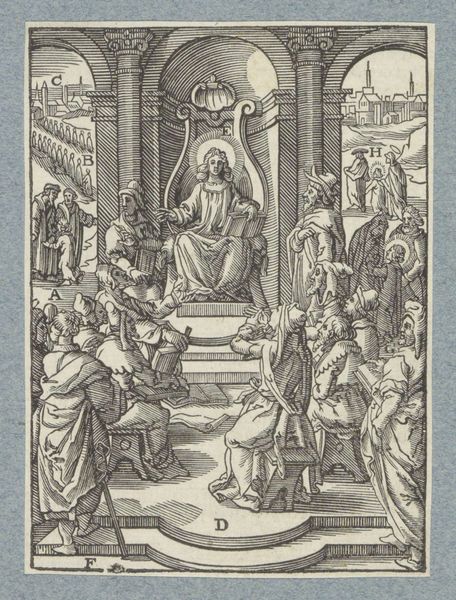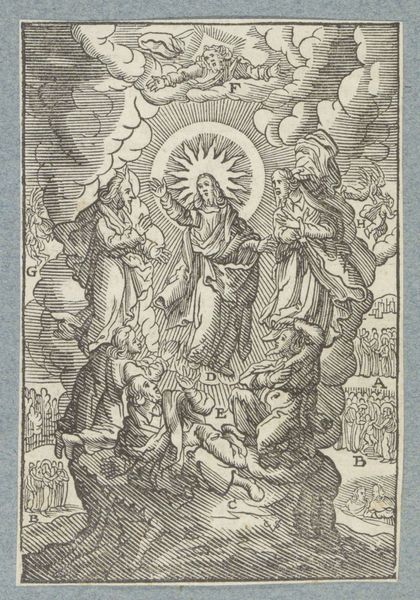
print, engraving
#
narrative-art
#
baroque
# print
#
figuration
#
line
#
history-painting
#
engraving
Dimensions: height 111 mm, width 74 mm
Copyright: Rijks Museum: Open Domain
Editor: We're looking at Christoffel van Sichem II’s "Coronation of Mary," an engraving from 1629. The use of line is quite striking. How would you approach understanding the aesthetic choices within this piece? Curator: We must attend to the organization of space. Note the distinct registers – the earthly realm populated by figures in supplication, the celestial sphere dominated by Mary and God. The composition bifurcates the divine and the mortal through strategic arrangements of light and form. Observe how the swirling clouds delineate these tiers, functioning as both barrier and connector. Editor: The clouds seem to have multiple forms; I wonder if it adds to the complexity? Curator: Indeed. Consider how the varying textures achieved through line density construct meaning. In the lower register, harsher, more condensed lines create a sense of earthly weight, whilst finer lines define the ethereal quality of the heavens. This variation underscores the formal contrast of corporeal existence and celestial grace. Are there particular forms or structures within this piece which you perceive as visually powerful? Editor: The symmetry around Mary and God is captivating, particularly their garments. Does this have any meaning in terms of composition? Curator: The symmetry is paramount. Observe how mirroring in the central figures reinforces the theme of divine order. However, asymmetries appear – a subtly tilted head or slightly different hand gesture that serve not to disrupt the symmetry, but to animate it. Editor: I see how that pushes beyond mere static representation. Thank you, I’m finding the different layers of form emerging fascinating to unravel! Curator: You are welcome. Analyzing its formal qualities offers valuable insights into the artwork. Through acute visual attentiveness, we deepen our understanding of its semiotic function and artistic import.
Comments
No comments
Be the first to comment and join the conversation on the ultimate creative platform.

